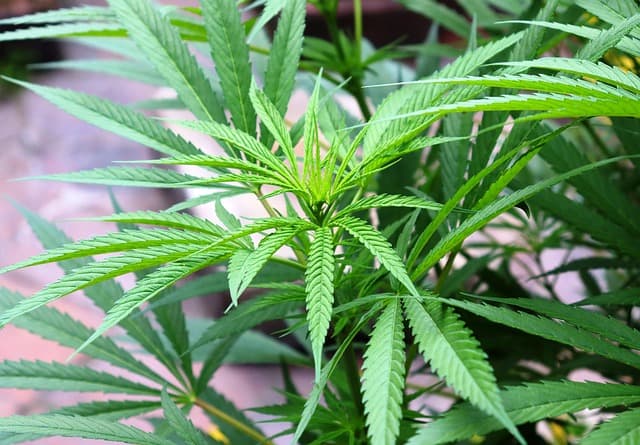Marijuana leaves brown spots are a common issue that many cannabis growers face. These brown spots can be a sign of several underlying problems, including nutrient deficiencies, pests and diseases, heat stress, and watering issues.
Identifying the root cause of the brown spots is crucial to treating the problem and ensuring the plant’s health.
Understanding nutrient deficiencies is essential in identifying the cause of brown spots on marijuana leaves. Nutrient deficiencies, such as calcium or magnesium deficiencies, can cause brown spots on leaves.
Additionally, the role of light and heat, soil and pH levels, and watering practices can all impact the health of the plant and cause brown spots on the leaves. Pests and diseases can also cause brown spots on the leaves, which can be treated with appropriate remedial measures.
Key Takeaways
- Brown spots on marijuana leaves can be caused by several underlying problems, including nutrient deficiencies, pests and diseases, heat stress, and watering issues.
- Understanding nutrient deficiencies, the role of light and heat, soil and pH levels, and watering practices is crucial in identifying the cause of brown spots on marijuana leaves.
- Remedial measures and prevention techniques can be used to treat and prevent brown spots on marijuana leaves caused by various factors.
More on this category:
Identifying Brown Spots on Marijuana Leaves
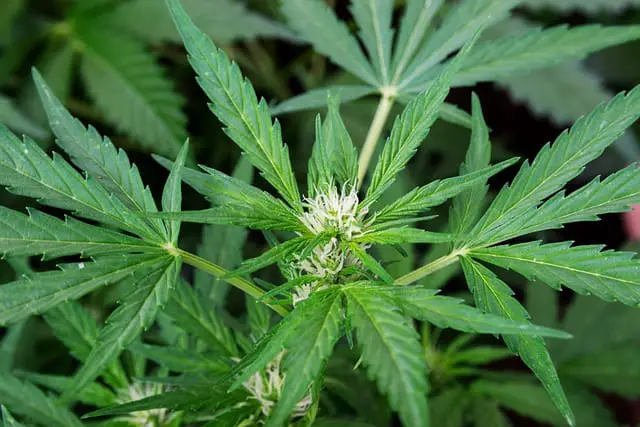
Brown spots on marijuana leaves are a common issue that many growers face. These spots can be a sign of a range of problems, from nutrient deficiencies to pests and diseases. Identifying the cause of brown spots on marijuana leaves is crucial to ensure the health and vitality of your plants.
The appearance of brown spots on cannabis leaves can vary depending on the underlying cause. Typically, brown spots will appear as small, circular or irregularly shaped patches on the leaves. These spots may be surrounded by a yellow halo or appear as a solid brown discoloration.
One of the most common causes of brown spots on marijuana leaves is low pH levels in the soil or growing medium. When the pH is too low, the plant is unable to absorb essential nutrients, leading to brown spots and other symptoms of nutrient deficiencies.
Growers can diagnose low pH levels by testing the pH of their soil or growing medium using a pH meter or testing kit.
Another common cause of brown spots on marijuana leaves is pests such as spider mites, aphids, and whiteflies. These insects can cause damage to the leaves, resulting in brown spots and other signs of stress. Growers can diagnose pest infestations by inspecting their plants for signs of insects or their eggs.
Nutrient deficiencies can also cause brown spots on marijuana leaves. For example, a lack of magnesium can lead to brown spots and yellowing of the leaves. Growers can diagnose nutrient deficiencies by inspecting their plants for signs of discoloration and using nutrient testing kits to identify which nutrients are lacking.
Understanding Nutrient Deficiencies
Marijuana plants need a variety of nutrients to grow healthy and strong. When they don’t receive the right amount of nutrients, they may develop brown spots on the leaves, which is a sign of a nutrient deficiency. Here are some of the most common nutrient deficiencies that can cause brown spots on marijuana leaves:
1. Calcium Deficiency
Calcium is an essential nutrient for marijuana plants. It helps with nutrient uptake and healthy new growth. A calcium deficiency can cause brown spots on the leaves, as well as stunted growth and weak stems.
To prevent calcium deficiency, growers can use a nutrient solution that contains calcium or add calcium supplements to their soil.
2. Potassium Deficiency
Potassium is another essential macronutrient that marijuana plants need to grow healthy and strong. A potassium deficiency can cause brown spots on the leaves, as well as yellowing and curling of the leaves.
To prevent potassium deficiency, growers can use a nutrient solution that contains potassium or add potassium supplements to their soil.
3. Nitrogen Deficiency
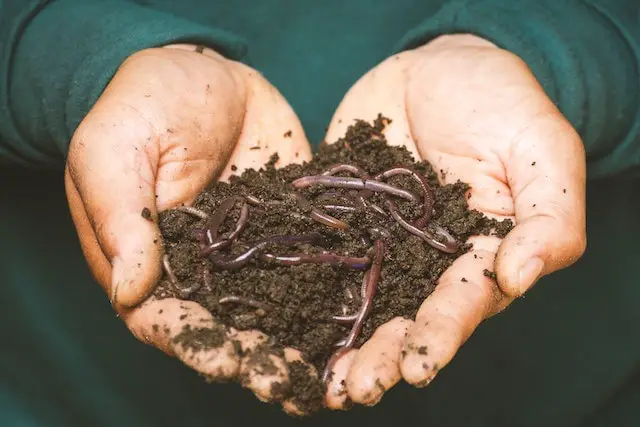
Nitrogen is a crucial nutrient for marijuana plants, as it helps with chlorophyll production and overall growth. A nitrogen deficiency can cause yellowing of the leaves and stunted growth. To prevent nitrogen deficiency, growers can use a nutrient solution that contains nitrogen or add nitrogen supplements to their soil.
4. Phosphorus Deficiency
Phosphorus is another essential macronutrient that marijuana plants need to grow healthy and strong. A phosphorus deficiency can cause brown spots on the leaves, as well as stunted growth and weak stems.
To prevent phosphorus deficiency, growers can use a nutrient solution that contains phosphorus or add phosphorus supplements to their soil.
5. Iron Deficiency
Iron is an essential micronutrient that marijuana plants need to grow healthy and strong. An iron deficiency can cause yellowing of the leaves and stunted growth. To prevent iron deficiency, growers can use a nutrient solution that contains iron or add iron supplements to their soil.
6. Zinc Deficiency
Zinc is another essential micronutrient that marijuana plants need to grow healthy and strong. A zinc deficiency can cause yellowing of the leaves and stunted growth. To prevent zinc deficiency, growers can use a nutrient solution that contains zinc or add zinc supplements to their soil.
7. Magnesium Deficiency
Magnesium is an essential macronutrient that marijuana plants need to grow healthy and strong. A magnesium deficiency can cause yellowing of the leaves and stunted growth. To prevent magnesium deficiency, growers can use a nutrient solution that contains magnesium or add magnesium supplements to their soil.
8. Sulfur Deficiency
Sulfur is another essential macronutrient that marijuana plants need to grow healthy and strong. A sulfur deficiency can cause yellowing of the leaves and stunted growth. To prevent sulfur deficiency, growers can use a nutrient solution that contains sulfur or add sulfur supplements to their soil.
9. Boron Deficiency
Boron is an essential micronutrient that marijuana plants need to grow healthy and strong. A boron deficiency can cause brown spots on the leaves, as well as stunted growth and weak stems. To prevent boron deficiency, growers can use a nutrient solution that contains boron or add boron supplements to their soil.
10. Nitrogen Toxicity
While nitrogen is an essential nutrient for marijuana plants, too much of it can be harmful. Nitrogen toxicity can cause dark green leaves, as well as burnt tips and stunted growth. To prevent nitrogen toxicity, growers should avoid over-fertilizing their plants with nitrogen-rich nutrients.
In conclusion, nutrient deficiencies can cause brown spots on marijuana leaves, which is a sign that the plants are not receiving the right amount of nutrients. Growers can prevent nutrient deficiencies by using a nutrient solution that contains the necessary nutrients or by adding nutrient supplements to their soil.
Role of Light and Heat

Light and heat are two of the most important factors when it comes to growing healthy cannabis plants. However, too much of either of these can cause brown spots on marijuana leaves. In this section, we will discuss the role of light and heat in causing brown spots on cannabis leaves.
1. Light Burn
Light burn is a common cause of brown spots on cannabis leaves. When a plant is exposed to too much direct light, it can cause the leaves to burn and turn brown. This is especially true for young plants that are still developing. To prevent light burn, it is important to keep your plants at a safe distance from the light source.
2. Heat Stress
Heat stress is another common cause of brown spots on cannabis leaves. When a plant is exposed to high temperatures, it can cause the leaves to wilt and turn brown.
This is especially true for plants that are grown in hot and humid environments. To prevent heat stress, it is important to maintain a consistent temperature in your grow room.
3. Overexposure to Light
Overexposure to light can also cause brown spots on cannabis leaves. When a plant is exposed to too much light, it can cause the leaves to lose their color and turn brown.
This is especially true for plants that are grown in direct sunlight. To prevent overexposure to light, it is important to provide your plants with the right amount of shade.
Impact of Soil and pH Levels
The soil and pH levels play a significant role in the health of marijuana plants. If the soil is deficient in essential nutrients, it can lead to brown spots on the leaves. Similarly, if the pH levels are too low, it can cause nutrient lockout, which can also result in brown spots on the leaves.
Marijuana plants prefer a slightly acidic soil with a pH range between 6.0 and 7.0. If the pH is too low, it can prevent the plants from absorbing essential nutrients, leading to deficiencies and brown spots on the leaves.
On the other hand, if the pH is too high, it can cause the plants to absorb too much of certain nutrients, leading to toxicity and other issues.
It is crucial to monitor the pH levels of the soil regularly and adjust them as necessary. One way to do this is by using a pH meter to test the soil’s acidity. If the pH is too low, adding lime or dolomite can help raise it. If the pH is too high, adding sulfur or acidic fertilizers can help lower it.
In addition to monitoring the pH levels of the soil, it is also essential to use pH-neutral water when watering the plants. Using water that is too acidic or alkaline can throw off the pH levels of the soil and cause nutrient lockout.
Pests and Diseases Affecting Marijuana Leaves
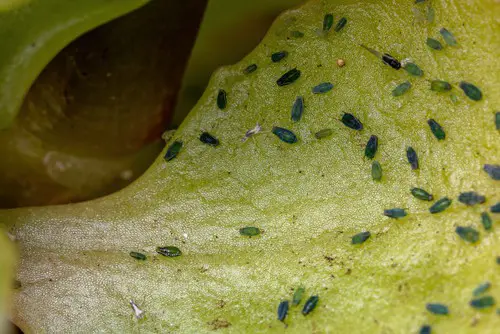
Marijuana plants are susceptible to various pests and diseases that can cause brown spots on their leaves. Identifying the cause of the brown spots is crucial in determining the appropriate treatment. In this section, we will discuss some of the common pests and diseases that affect marijuana leaves.
1. Ants
Ants are not harmful to marijuana plants, but they can attract other pests that are harmful. Ants are attracted to the sweet honeydew that is produced by pests such as aphids and mealybugs.
If you notice ants on your marijuana plants, it is a sign that there is a pest infestation. You can use sticky traps to control the ants and prevent them from attracting other pests.
2. Spider Mites
Spider mites are tiny pests that are difficult to see with the naked eye. They are known to cause brown spots on marijuana leaves, and they can quickly spread to other plants. Spider mites feed on the sap of the plant, causing the leaves to turn yellow and brown. You can use insecticidal soap or neem oil to control spider mites.
3. Thrips
Thrips are tiny insects that feed on the sap of the plant. They are known to cause brown spots on marijuana leaves, and they can also cause the leaves to curl and deform. Thrips can be controlled with insecticidal soap or neem oil.
4. Fungus Gnats
Fungus gnats are small, black flies that are attracted to moist soil. They lay their eggs in the soil, and the larvae feed on the roots of the plant. Fungus gnats can cause brown spots on marijuana leaves, and they can also stunt the growth of the plant.
You can control fungus gnats by allowing the soil to dry out between waterings and using sticky traps.
5. Leaf Miners
Leaf miners are small insects that burrow into the leaves of the plant. They leave behind tunnels that can cause brown spots on marijuana leaves. Leaf miners can be controlled with insecticidal soap or neem oil.
Watering Practices and Their Effects
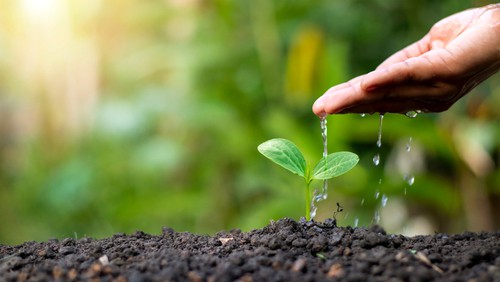
Watering practices play a crucial role in the health of marijuana plants. Overwatering and underwatering are two common mistakes that can cause brown spots on marijuana leaves. It is important to water cannabis plants correctly to avoid these issues.
Overwatering is a common mistake made by novice growers. When plants receive too much water, the roots are unable to absorb oxygen, which can lead to root rot.
Overwatering can also cause nutrient deficiencies and create an environment that is conducive to mold and fungus growth. In addition, overwatering can cause the leaves to turn yellow and eventually brown.
Underwatering is another common mistake made by growers. When plants do not receive enough water, they will wilt and become weak. Underwatering can also cause nutrient deficiencies and create an environment that is conducive to pest infestations. In addition, underwatering can cause the leaves to turn brown and crispy.
To avoid overwatering and underwatering, growers should follow a wet-dry cycle. This means that plants should be watered thoroughly and then allowed to dry out before watering again.
The frequency of watering will depend on the size of the plant, the type of soil, and the environmental conditions. In general, plants should be watered when the top inch of soil is dry to the touch.
It is also important to remove any excess water from the drainage tray to prevent root rot and mold growth. Growers should also avoid watering the leaves directly as this can lead to the development of brown spots.
Stages of Cannabis Plant Growth
Cannabis plants go through four primary stages of growth: germination, seedling, vegetative, and flowering. Each stage has its unique characteristics and requirements for optimal growth and yield. Understanding these stages is crucial for growers to ensure their plants reach their full potential.
Vegetative Stage
The vegetative stage is when the plant grows stems, leaves, and branches. During this stage, the plant needs plenty of light and nutrients to promote healthy growth. Growers should aim to keep the plant in a vegetative state for several weeks to allow for adequate growth before moving on to the flowering stage.
New growth during this stage is crucial for bud production in the flowering stage. Growers should monitor the plant’s growth and adjust the lighting, nutrients, and other environmental factors to promote healthy vegetative growth.
Flowering Stage
The flowering stage is when the plant begins to produce buds. This stage typically lasts between 8 to 11 weeks, depending on the strain. During this stage, the plant requires a specific light cycle to promote bud development.
Growers should monitor the plant’s nutrient levels, humidity, and temperature during the flowering stage to ensure optimal bud production. Proper care during this stage can significantly impact the final yield and quality of the buds.
Remedial Measures and Prevention
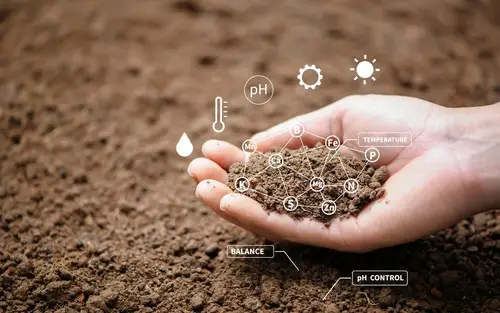
When it comes to brown spots on marijuana leaves, prevention is always better than cure. However, if the problem has already occurred, there are several remedial measures that growers can take to save their plants.
1. Prevention
To prevent brown spots on marijuana leaves, growers should maintain a consistent and appropriate pH level, avoid overwatering, and ensure that the plants receive adequate nutrients. They should also ensure that the plants receive adequate light and are not exposed to light stress.
2. Remedial Measures
If brown spots have already appeared on the marijuana leaves, growers should take the following remedial measures:
- Restore pH Balance: If the pH level is too low, growers should use pH-up solutions to raise the pH level. If the pH level is too high, growers should use pH-down solutions to lower the pH level. They should also ensure that the pH level is maintained at the appropriate level.
- Test Soil: Growers should test the soil to determine if there is a nutrient deficiency. If there is a nutrient deficiency, they should add the appropriate nutrients to the soil.
- Flush Soil: If the soil has too many nutrients, growers should flush the soil with water to remove the excess nutrients.
- Identify Root Cause: Growers should identify the root cause of the problem and address it accordingly. For example, if the problem is due to light stress, growers should adjust the light source to ensure that the plants receive adequate light.
3. Flushing
Flushing is a process that involves flushing the soil with water to remove excess nutrients and salts. Flushing can help to prevent brown spots on marijuana leaves and improve the overall health of the plants. Growers should flush the soil with water until the runoff is clear.
Understanding the Role of Other Factors
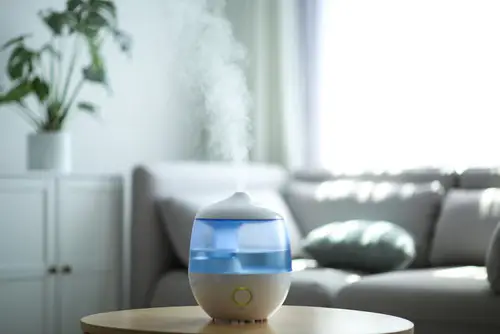
While brown spots on cannabis leaves are often a sign of nutrient deficiency, other factors can also contribute to the problem. Understanding these factors is crucial for maintaining healthy crops and preventing future issues.
One important factor to consider is humidity. High humidity levels can create an ideal environment for powdery mildew, which can cause brown spots on leaves. Proper ventilation and airflow can help reduce humidity levels and prevent this issue.
Another factor to consider is the role of minerals in plant health. While nutrient deficiencies can cause brown spots on leaves, an excess of certain minerals can also create problems.
For example, too much magnesium can cause yellowing of fan leaves and interfere with photosynthesis. It is important to maintain a balance of minerals to ensure healthy plant growth.
In addition to minerals, amino acids also play a crucial role in plant health. Amino acids are the building blocks of protein production, which is essential for healthy growth. They also help with root growth and nutrient absorption. Ensuring that plants have access to sufficient amino acids can help prevent brown spots on leaves.
Finally, it is important to consider the role of the heart and veins in plant health. The heart of the plant is responsible for transporting water and nutrients to the rest of the plant, while the veins distribute those nutrients to the leaves. Any issues with these systems can cause brown spots on leaves and other problems.
Specific Growing Mediums
When it comes to brown spots on marijuana leaves, the growing medium can play a significant role in the development of this issue. Here are some specific growing mediums and how they can affect your plants:
Hydro
Hydroponic systems are a popular choice for growing marijuana. However, they can also be a breeding ground for brown spots on leaves. This is because hydroponic systems lack the organic matter found in soil that can help prevent nutrient deficiencies.
One common cause of brown spots in hydroponic systems is pH imbalance. If the pH is too high or too low, your plants may not be able to absorb the nutrients they need, leading to brown spots on the leaves.
To prevent brown spots in hydroponic systems, it’s important to monitor the pH levels regularly and adjust as needed. Additionally, adding organic matter to the system can help prevent nutrient deficiencies.
Coco
Coco coir is a growing medium made from coconut husks. It’s a popular alternative to soil because it’s lightweight, pH neutral, and has excellent water retention properties. However, coco coir can also be a breeding ground for brown spots on marijuana leaves.
One common cause of brown spots in coco coir is salt buildup. Coco coir has a high cation exchange capacity, which means it can hold onto nutrients for a long time. However, if you don’t flush the coco coir regularly, these nutrients can build up and cause nutrient burn, which can lead to brown spots on the leaves.
To prevent brown spots in coco coir, it’s important to flush the growing medium regularly with pH-balanced water. Additionally, adding organic matter to the coco coir can help prevent nutrient deficiencies.
Frequently Asked Questions
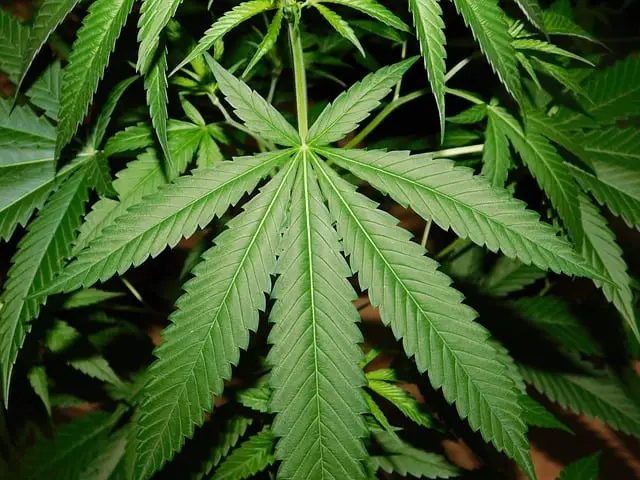
How do I differentiate between leaf septoria and calcium deficiency?
Leaf septoria is a fungal disease that causes brown spots with yellow halos on marijuana leaves. Calcium deficiency, on the other hand, is a nutrient deficiency that causes brown spots without yellow halos.
To differentiate between the two, look for yellow halos around the brown spots. If they are present, it is likely leaf septoria. If there are no yellow halos, it is more likely to be a calcium deficiency.
What causes brown spots on marijuana leaves?
Brown spots on marijuana leaves are often caused by nutrient deficiencies such as calcium, magnesium, or potassium. Other causes include pests, fungal diseases, overwatering, and pH imbalances.
How do I treat brown spots on fan leaves during flowering?
If the brown spots are caused by a nutrient deficiency, you can treat them by adjusting the pH of your soil or hydroponic solution and providing the plant with the missing nutrients.
If the spots are caused by pests or fungal diseases, use an appropriate pesticide or fungicide. Be sure to follow the instructions carefully and avoid using harmful chemicals that can harm the plant or the consumer.
Why do autoflower leaves develop brown spots?
Autoflower leaves can develop brown spots for the same reasons as regular marijuana leaves, such as nutrient deficiencies, pests, fungal diseases, overwatering, and pH imbalances.
However, autoflower plants have a shorter life cycle, and any problems that arise must be addressed quickly to avoid affecting the plant’s overall growth and yield.
What can I do about leaves getting brown spots?
The first step is to identify the cause of the brown spots. Once you have identified the cause, you can take appropriate measures to treat the problem.
This may include adjusting the pH, providing the plant with missing nutrients, using pesticides or fungicides, adjusting watering schedules, or removing affected leaves.
How do I identify and treat tiny yellow dots on marijuana leaves?
Tiny yellow dots on marijuana leaves are often a sign of spider mites or thrips. These pests can be treated with appropriate pesticides or insecticides. Be sure to follow the instructions carefully and avoid using harmful chemicals that can harm the plant or the consumer.

Hey, I’m Lisa and I’ve been an avid gardener for over 30 years. I love writing, talking and living in the garden! Feel free to connect with me on my socials below

